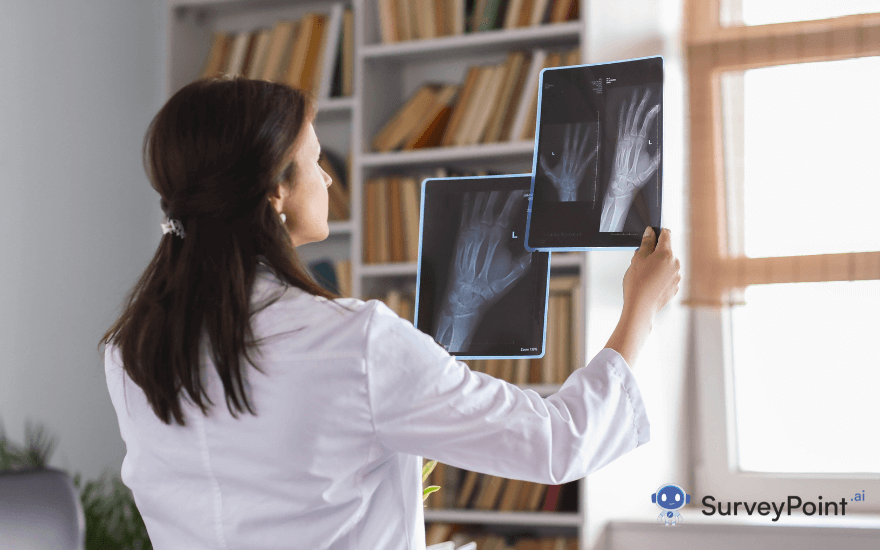
What is Teleradiology Software?
Teleradiology software refers to the technology that allows medical images such as X-rays, CT scans, and MRIs to be transmitted electronically from one location to another for the purposes of interpretation and consultation. This innovation has revolutionized the field of radiology, making it possible for radiologists to provide their expertise remotely, thereby increasing the accessibility and efficiency of medical imaging services.
How Does Teleradiology Software Work?
Teleradiology software operates through a series of complex yet seamless processes. The primary steps include the acquisition of images at a medical facility, the secure transmission of these images over a network, and the eventual reception and analysis by a radiologist at a different location. The software ensures that the images are transmitted with high fidelity and that patient data is protected through encryption and other security measures.
Understanding the Core Components :
To comprehend how teleradiology systems function, it’s essential to understand their core components:
- An Image Sending Station
The image sending station is typically located in a hospital or clinic where the imaging studies are performed. This station is equipped with modalities such as MRI, CT, and X-ray machines that capture the diagnostic images. The software at this station converts these images into digital formats and prepares them for secure transmission.
- A Transmission Network
The transmission network is the backbone of teleradiology systems, responsible for transferring medical images from the sending station to the receiving station. This network can utilize various technologies, including the internet, dedicated medical networks, and secure VPNs, to ensure that data is transmitted quickly and securely.
- A Receiving Image Station
The receiving image station is where the radiologist or medical professional accesses the transmitted images. This station is equipped with advanced image processing and analysis software that allows for the detailed examination of medical images. The radiologist can provide diagnostic reports and consultations based on these images, regardless of their physical location.
How do I Choose a Teleradiology Software Provider?
Selecting a teleradiology software provider is a critical decision that can impact the quality of care you provide. Here are some key considerations:
- Security and Compliance
Ensure that the software provider complies with industry standards and regulations such as HIPAA in the U.S. or GDPR in Europe. The software should have robust encryption and security protocols to protect patient data.
- Image Quality
High-quality images are crucial for accurate diagnoses. Choose a provider that offers superior image resolution and supports various imaging modalities.
- Integration and Compatibility
The software should integrate seamlessly with your existing systems, such as Electronic Health Records (EHR) and Picture Archiving and Communication Systems (PACS). Compatibility with different operating systems and devices is also important.
- User Support and Training
A reliable provider should offer comprehensive support and training to ensure that your staff can effectively use the software. Look for providers with a track record of responsive customer service and technical support.
- Cost
Consider the total cost of ownership, including initial setup fees, subscription costs, and any additional charges for updates or support. Compare different providers to find a solution that offers good value for money.
Current and Future Trends in Teleradiology Software
The field of teleradiology is constantly evolving, driven by advancements in technology and changing healthcare needs. Some of the current and future trends include:
- Artificial Intelligence and Machine Learning
AI and machine learning are increasingly being integrated into teleradiology software to enhance image analysis and diagnostic accuracy. These technologies can help identify patterns and anomalies that might be missed by human eyes, providing an additional layer of scrutiny.
- Cloud-Based Solutions
Cloud computing offers significant advantages in terms of scalability, accessibility, and cost-effectiveness. More teleradiology solutions are moving to cloud-based platforms, allowing for easier data sharing and collaboration among healthcare professionals.
- Enhanced Mobility
With the rise of mobile health (mHealth), teleradiology software is becoming more accessible on smartphones and tablets. This trend allows radiologists to review and interpret images from virtually anywhere, providing greater flexibility and responsiveness.
- Improved Interoperability
Efforts are being made to improve interoperability between different teleradiology systems and healthcare platforms. This ensures that data can be easily shared and accessed across different providers and institutions, facilitating better patient care.
- Focus on Patient-Centric Care
Teleradiology software is increasingly being designed with a focus on patient-centric care. This includes features that allow patients to access their images and reports, communicate with radiologists, and participate more actively in their own healthcare.
Conclusion
Teleradiology software has transformed the field of radiology, providing greater accessibility, efficiency, and quality of care. Understanding the core components of teleradiology systems, such as the image sending station, transmission network, and receiving image station, is crucial for making informed decisions about adopting this technology. When choosing a teleradiology software provider, consider factors such as security, image quality, integration, support, and cost. Staying abreast of current and future trends, such as AI, cloud-based solutions, enhanced mobility, interoperability, and patient-centric care, will help you leverage the full potential of teleradiology to improve patient outcomes.
By carefully selecting the right teleradiology software and keeping up with technological advancements, healthcare providers can ensure that they are delivering the highest standard of care to their patients, regardless of geographical constraints.




